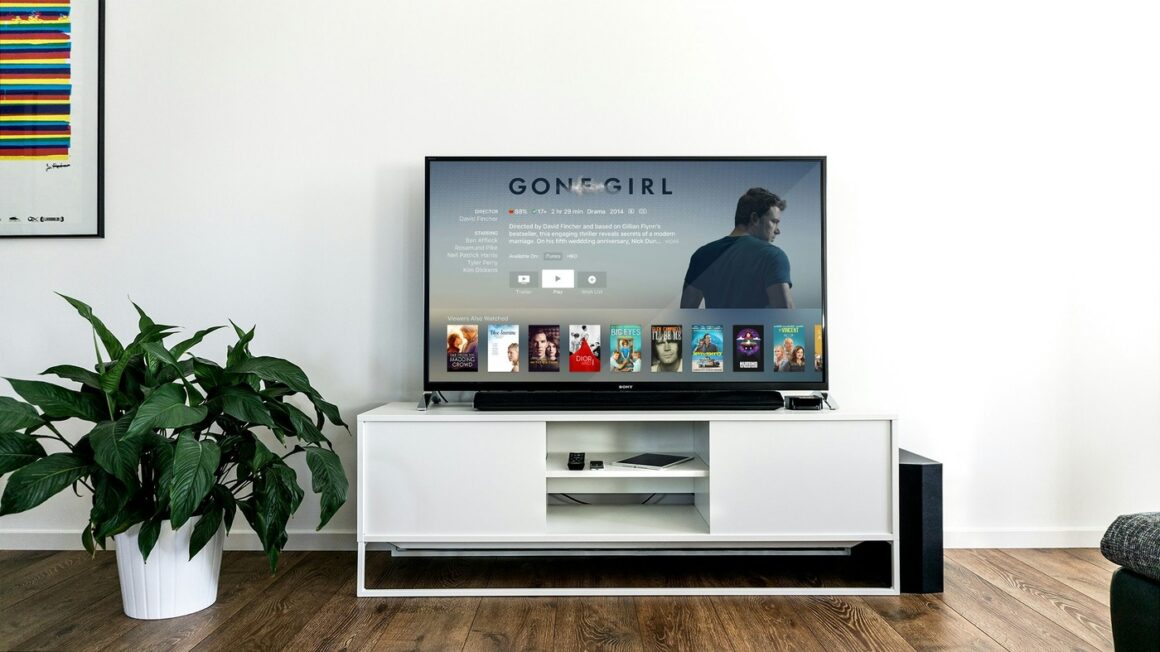Introduction to Setting Up a Home Media Server
In an era where digital content is king, having a home media server might just be the crown jewel of your personal entertainment empire. A home media server is a centralized digital repository that stores your collection of media — including movies, music, photos, and other digital media — and allows you to stream this content to various devices throughout your home. Unlike streaming services that require an internet connection and often come with monthly fees, a home media server puts you in complete control of your entertainment, making it accessible offline and on demand.
The surge in digital streaming services has revolutionized the way we access media. However, these services can come with limitations such as availability of content, regional restrictions, and ongoing costs. This is where the benefits of a personalized setup become apparent. By setting up your own media streaming system at home, you not only bypass these hurdles but also get to customize your viewing experience to suit your personal taste and lifestyle. Whether it’s binge-watching your favorite series on a rainy day, hosting a movie night with friends, or enjoying your carefully curated playlist at a family gathering, a home media server provides a seamless, personalized media experience.
In the upcoming sections, we’ll dive into choosing the right hardware, selecting the best software, and detailing the setup process to help you get your home media server up and running. You’ll see how investing a little time and effort into this setup can enhance your media consumption manifold, ensuring that your favorite content is always just a click away.
1. Choosing the Right Hardware
The foundation of a solid home server setup is choosing the right hardware. Your choice should be guided by your specific needs, such as the amount of media you plan to store, the number of users and devices that will access the server, and your budget. Here are three popular options:
- Dedicated NAS Devices: A Network Attached Storage (NAS) device is designed specifically for storing and serving media. These devices are reliable, often come with built-in redundancy features to protect against data loss, and can be easily scaled by adding more drives. NAS units are perfect for those who want a ‘set it and forget it’ solution that can quietly run 24/7 without much maintenance.
- Old PCs: Repurposing an old computer as a media server is a cost-effective option. These systems can be powerful enough to handle media streaming and storage, especially if they have decent specs. The main drawback is their size and power consumption, which are typically higher than other options.
- Modern Streamers: Devices like NVIDIA Shield or Apple TV can be used as media servers with the right software. They consume less power than an old PC and are much smaller, but may not offer the same level of storage flexibility or streaming capability as a NAS.
By assessing your needs against these options, you can choose the hardware that best fits your home media server goals.
2. Selecting Media Server Software
Once your hardware is in place, the next step is installing the best home media server software to manage and stream your content. There are several popular options available, each with its own set of features catering to different user levels:
- Plex: Plex is renowned for its user-friendly interface and robust feature set, including remote access, sharing capabilities, and on-the-fly transcoding. It’s ideal for beginners and advanced users alike who are looking for a seamless setup experience. Setting up Plex involves installing the Plex Media Server software on your chosen hardware, organizing your media files within Plex, and enjoying your media on any device, anywhere.
- Emby: Similar to Plex, Emby offers a great set of features but with a stronger focus on personalization and community-driven enhancements. It’s particularly good for users who like to tinker and want more control over their privacy.
- Kodi: For the enthusiasts who prefer a fully customizable media solution, Kodi is the go-to software. It supports a wide range of media formats and customization through add-ons, though it requires more technical knowledge to set up and maintain.
Choosing the right software depends largely on your comfort level with technology and the specific features you need. Each platform offers a unique set of tools to enhance your media viewing experience, making your home media server a powerful hub for all your entertainment needs.
Installation and Setup Process
Setting up a home media server involves a straightforward installation process followed by some key network configurations to ensure your system runs smoothly. Here’s a step-by-step guide to help you get started:
3. Installing the Media Server Software
- Choose Your Software: Based on your preferences outlined previously (Plex, Emby, Kodi), download the appropriate software from the official website.
- Install on Your Hardware:
- For NAS units, access your NAS interface from a browser, go to the application installation section, and install your media server software.
- For PCs or modern streamers, run the installer file and follow the on-screen instructions.
- Set Up Media Libraries:
- Launch the media server software.
- Add folders that contain your media files (movies, TV shows, music, etc.). Ensure each media type is properly categorized.
- Account and Network Access:
- Create an account or log in if required, which will help in accessing your server remotely.
- Configure access settings to define who can see and stream your media.
3.1 Configuring Network Settings
- Static IP Address:
- Assign a static IP address to your server to ensure it doesn’t change. This can typically be done through your router’s settings under LAN setup.
- Port Forwarding:
- Set up port forwarding in your router to allow external devices to access your server. This involves configuring your router to forward requests on a specific port to your server’s IP address. Consult your software’s documentation for the required port number.
- Quality of Service (QoS):
- If your router supports QoS, configure it to prioritize traffic to and from your media server. This can greatly improve streaming quality, especially in a busy network environment.
- Firewall Exceptions:
- Make sure that your firewall allows traffic on the ports used by your media server software. This might involve adjusting your firewall settings on both your router and server hardware.
- Testing:
- Once everything is configured, test the setup by accessing your media from different devices (smart TV, smartphone, tablet, etc.) both within your home network and remotely.
- Ensure that streams are stable and the server is accessible as expected.
Organizing Media Effectively
Efficient organization of files and folders is crucial for the smooth operation of any media server. Proper management not only enhances the user experience but also makes maintenance easier. Here are some best practices:
4. Best Practices for File and Folder Organization
- Consistent Naming Conventions: Use a uniform naming format for all files. For example, “Show Name – Season – Episode – Episode Title” for TV shows, and “Movie Title (Release Year)” for movies. This consistency helps your media server software correctly categorize and display your content.
- Folder Structure: Organize media into clear, dedicated folders—separate folders for Movies, TV Shows, Music, and Photos. Further categorization within these can help in easier navigation and management.
4.1 Leveraging Metadata and Automatic Organization
- Metadata Management: Use media server features that automatically fetch and fill metadata for your media files, such as cover art, subtitles, and synopses. This enhances the visual appeal and usability of your library.
- Software Tools: Tools within media server applications like Plex, Emby, or Kodi can automatically organize your media, correct metadata errors, and even recommend content based on your viewing habits.
5. Securing Your Media Server
As much as convenience is a priority, the security of your home network and media server cannot be overlooked. Here’s a quick guide to securing your media server setup:
5.1 Essential Security Measures
- Firewalls: Ensure your network’s firewall is active to block unauthorized access attempts. Configure your media server’s software firewall settings to allow legitimate traffic while blocking suspicious connections.
- VPNs: Using a VPN can encrypt the data transferred between your media server and external devices, protecting your privacy and data from eavesdropping. Set up a VPN on your network to secure all data exchanges.
- Password Protections: Implement strong, unique passwords for accessing your media server. Additionally, use multi-factor authentication where possible to enhance security.
- Regular Updates: Keep your media server software and hardware firmware up to date to protect against known vulnerabilities. Software updates often include security patches that can prevent potential breaches.
5.2 Testing Security Setup
- Audit Your Network: Periodically review your network settings and logs for any unusual activity. Tools like network monitors can help you keep an eye on who is accessing your server and what data is being transmitted.
- Security Scans: Run regular security scans using reputable antivirus and anti-malware software to catch any potential threats before they become a problem.
Securing Your Media Server
Securing your home network and media server is critical to protect your digital content and personal information from unauthorized access. Here’s how you can enhance your media server security:
6. Implementing Essential Security Measures
- Firewalls: Activate the firewall settings on both your router and server. This will help to monitor and control incoming and outgoing network traffic based on predetermined security rules.
- VPNs: Set up a Virtual Private Network (VPN) to encrypt your internet connection. This ensures that all data transmitted between your server and connected devices is secure from eavesdroppers.
- Password Protections: Use strong, unique passwords for server access. Consider implementing two-factor authentication for an added layer of security.
- Software Updates: Regularly update your server’s software and any connected devices to protect against vulnerabilities and exploits.
Conclusion
Throughout this guide, we’ve covered the essential steps to setting up and securing a home media server—from choosing the right hardware and software, to organizing your media and fortifying your network security. With your own server, you’ll enjoy the immense convenience and pleasure of streaming your favorite content seamlessly across devices at home.
For further reading and detailed tutorials, explore resources such as:
- Plex, Emby, and Kodi forums: These communities are great for getting help, sharing setups, and finding customization tips.
- Network security blogs: Stay updated on the latest in network safety to protect your setup.
We encourage you to take the leap and start building your media server today!
We’d love to hear about your experiences or any questions you might have as you embark on your media server journey. Feel free to comment below, and if you need any assistance or personal consultation for setting up your home media server, don’t hesitate to reach out. Let’s make your home entertainment as thrilling and safe as possible!








